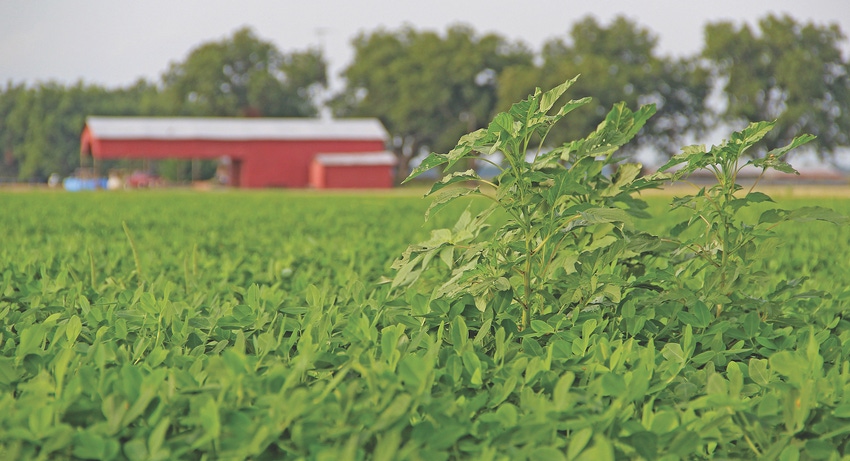December 29, 2020

Sponsored Content
Scientists are getting closer to finding the genes for maleness in waterhemp and Palmer amaranth, two of the most troublesome agricultural weeds in the U.S.
Finding the genes could enable new "genetic control" methods for the weeds, which, in many places, no longer respond to herbicides.
"If we knew which genes control maleness and we could make those genes proliferate within the population, every plant in the field would be a male after a few generations, and theoretically, the population would crash," said Pat Tranel, professor and associate head in the Department of Crop Sciences at the University of Illinois and lead author on a study in New Phytologist.
Tranel and his colleagues had previously identified molecular markers associated with the male genomic region. After sequencing male genomes for both species, the researchers were able to use those markers to zero in on the male-specific region. Now, they are within 120 to 150 genes of finding their target.
"We're confident most of those 120 or so genes are probably doing nothing. It's just stuff that's accumulated in that region of the genome," Tranel said. "If I had to guess, I'd say maybe 10 of them are actually doing something relevant."
Understanding why weeds thrive
Narrowing down the genes related to gender in these weeds could have practical value for control, but the study also sheds light on the phenomenon of dioecy - male and female sexual organs on separate individuals — more generally. The vast majority of animals are dioecious, but it's rare in plants. More than 90% of flowering plants have both sexual organs on the same individual, and often within the same flower.
Waterhemp and Palmer amaranth, however, are dioecious.
Dioecy means it's impossible for a plant to self-pollinate; instead, female gametes must be fertilized by male pollen from another plant. That's a good thing for ensuring genetic diversity in a population. And it's likely what has made waterhemp and Palmer amaranth so successful at evading the detrimental effects of multiple herbicides.
"To date, waterhemp and Palmer amaranth have evolved resistance to herbicides spanning seven and eight modes of action, respectively. Dioecious reproduction results in all these resistance traits being mixed and matched within individuals. This mixing has allowed populations of both species to combine multiple herbicide resistances, leaving producers with few effective herbicide choices," Tranel said.
Understanding the rare phenomenon of dioecy in plants can help scientists piece together how traits are inherited from each parent, and to understand how the phenomenon evolves.
Unlike in animals, in which dioecy is thought to have evolved just once, scientists believe dioecy in plants has evolved numerous times. And, according to Tranel's study, it appears to have evolved independently in waterhemp and Palmer amaranth, two very closely related species.
Tranel hopes to narrow down the male-specific Y region in both species even further to isolate the genes that determine maleness. There's no guarantee a genetic control solution will be developed once those genes are identified —Tranel would likely need to attract industry partners for that — but having such a tool is not as far off as it once was.
Source: University of Illinois College of Agricultural, Consumer and Environmental Sciences, which is solely responsible for the information provided and is wholly owned by the source. Informa Business Media and all its subsidiaries are not responsible for any of the content contained in this information asset.
You May Also Like




